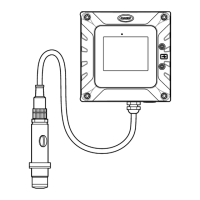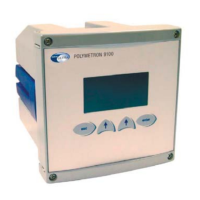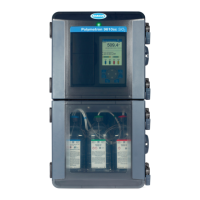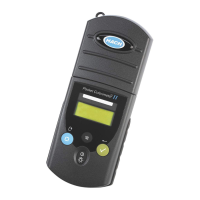Problem Probable cause Resolution
There is no significant
current increase when
the sensor is in the air
for calibration.
There is contamination in the
electrolyte due to a loose filling
screw.
Replace the electrolyte. Refer to the illustrated steps
in Assemble the sensor on page 8.
Make sure that the electrolyte filling washer is
installed with the plastic filling screw. Tighten the
plastic filling screw with a screwdriver, but do not
use excessive force. Make sure that the sensor does
not have damage.
There is contamination in the
electrolyte due to a membrane
leak.
Replace the electrolyte and the membrane. Refer to
Replace the membrane on page 21.
The membrane is torn. Do the steps in Replace the membrane on page 21.
The electrode is not correctly
mounted in the sensor body, so
there is a gap between the
membrane and the cathode.
Remove the electrolyte filling screw. Then, hand
tighten the holding nut for the electrode. Install the
electrolyte filling screw again.
Damage to the sensor cable or
connections occurred.
Check the connection to the controller module. If
correct check the connections to the sensor cable
connector.
The membrane is worn. Do the steps in Replace the membrane on page 21.
There is a dark green deposit of
silver bromide (AgBr) on the
silver anode of the electrode.
Do the steps in Replace the membrane on page 21
and Clean the electrode on page 22.
The measurement is
not stable.
There is water or humidity in the
sensor cable connector.
Dry the sensor cable connector inside and out.
The connection of the sensor
cable is not correct.
Examine the sensor cable connection at the module
in the controller. If correct, examine the connections
at the sensor cable connector.
There are air bubbles near the
cathode.
Replace the electrolyte. Make sure that there are no
air bubbles at the bottom of the sensor body.
The sensor has been violently
shaken.
Examine the mounting and stability of the sensor.
There is electromagnetic
interferences near the sensor or
sensor cable.
Find a better location for the sensor cable and
examine the EMC levels.
There is temporary interference
with other gases.
The interference is primarily H
2
S.
The sample flow rate is too low
(4 mL/h minimum).
Increase the sample flow rate.
Sludge from a heterogeneous
sample has caused damage to
the membrane.
Install a deflector or change the sensor location.
There is a pressure variation in
the sample line.
Make sure the sensor is used at atmospheric
pressure.
24 English

